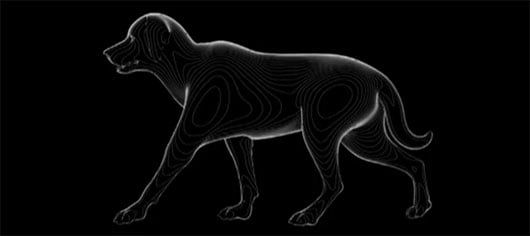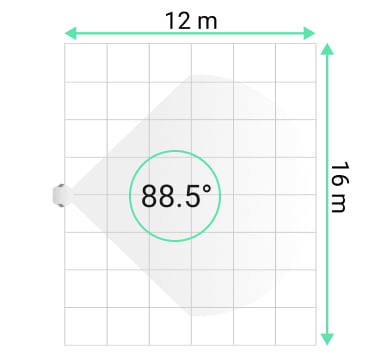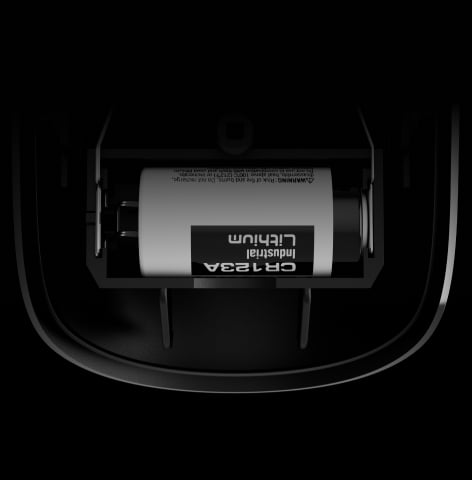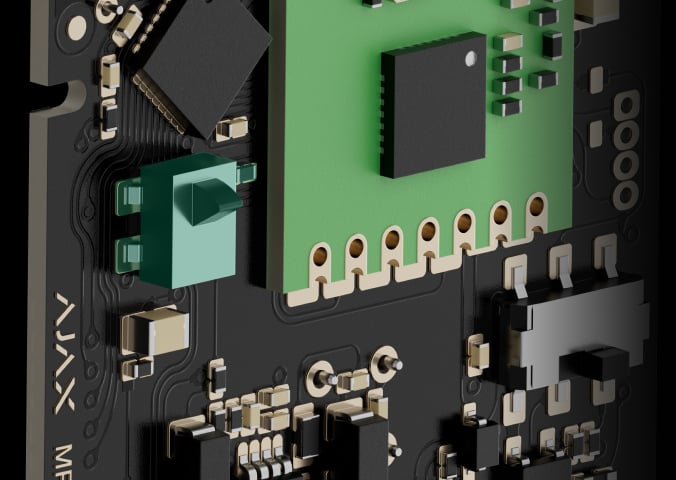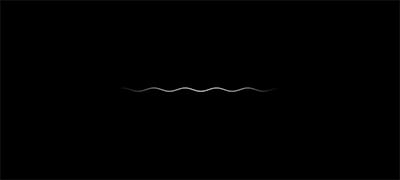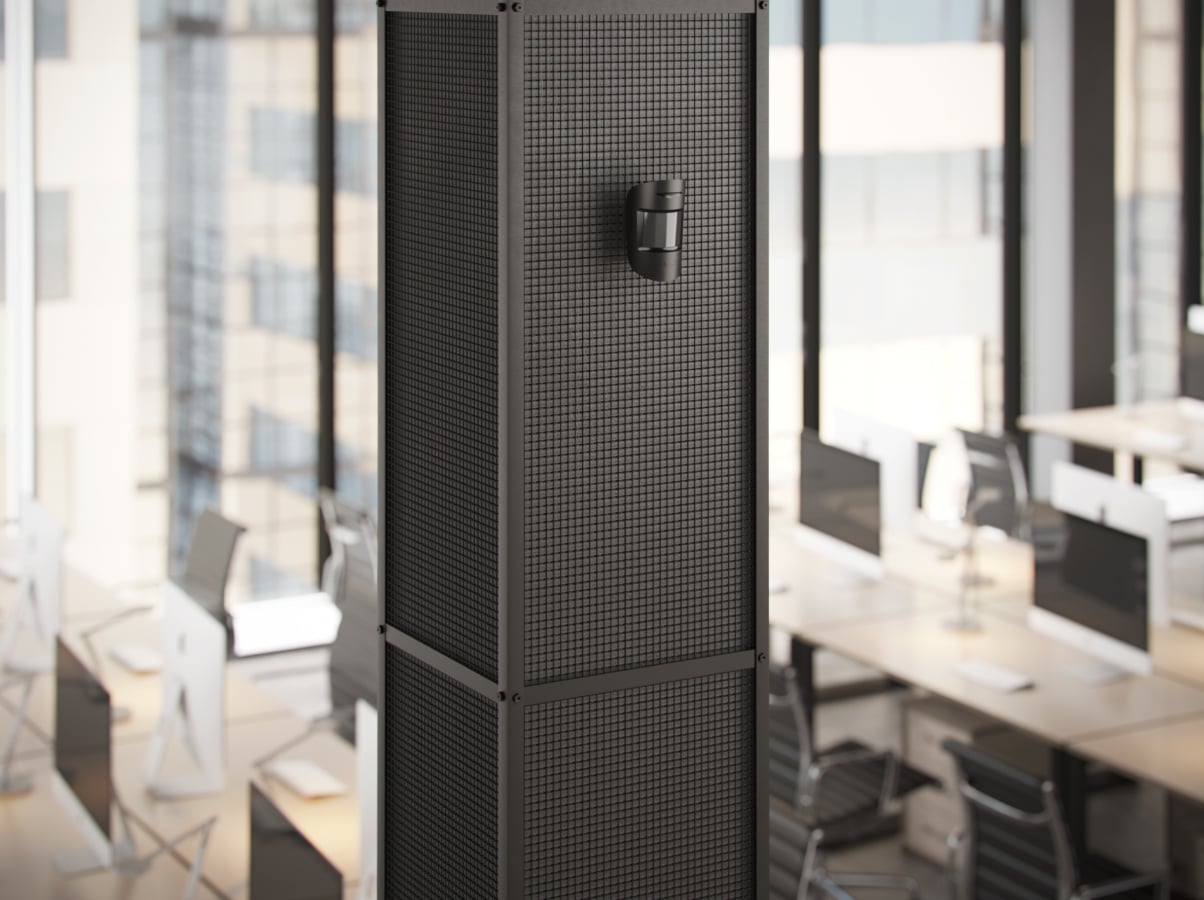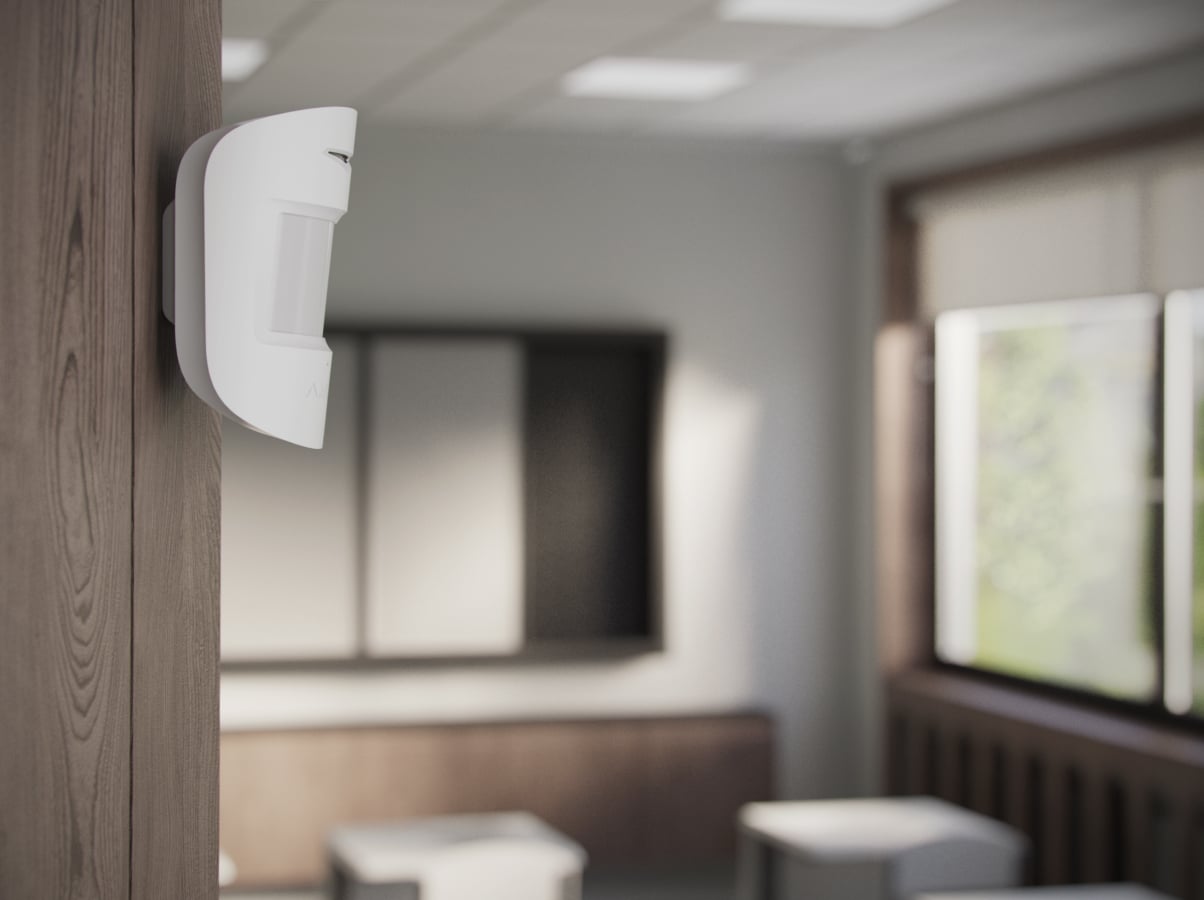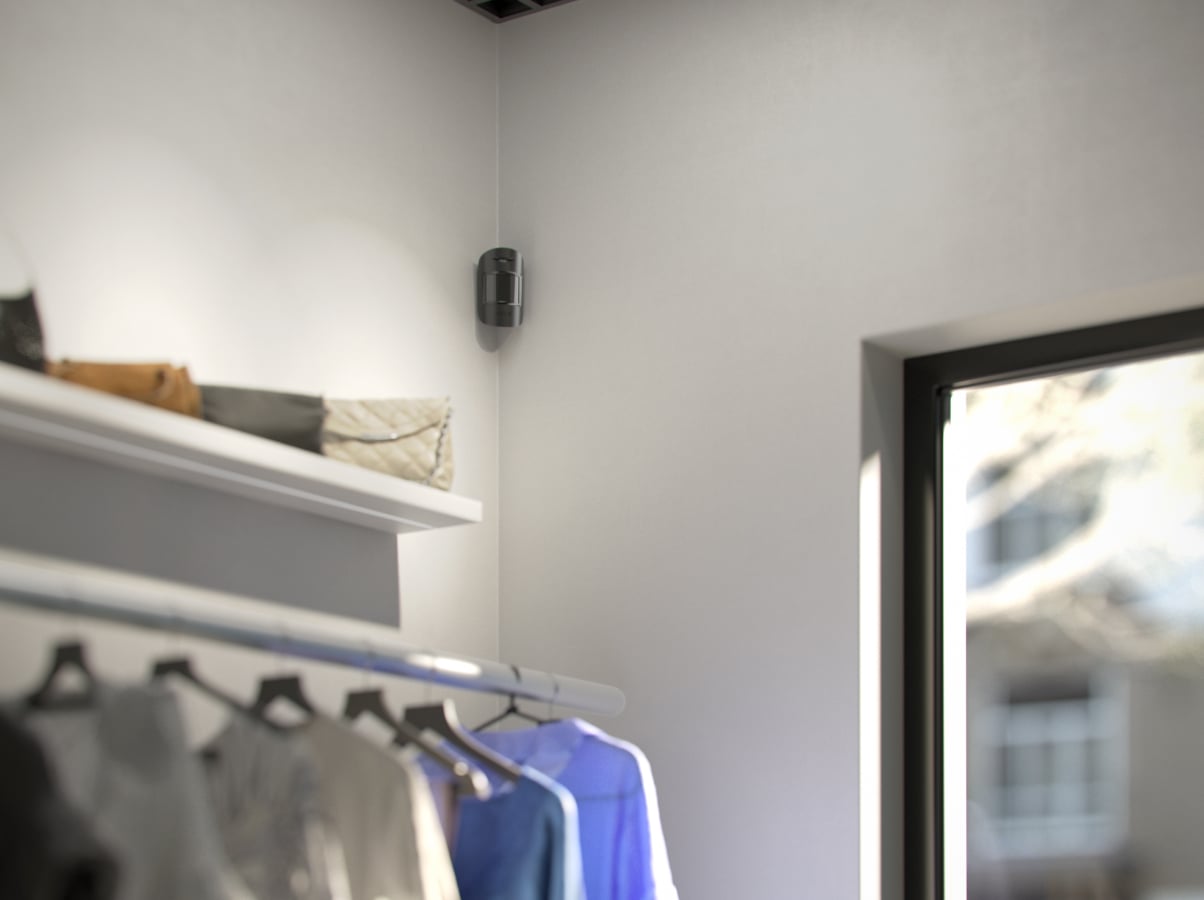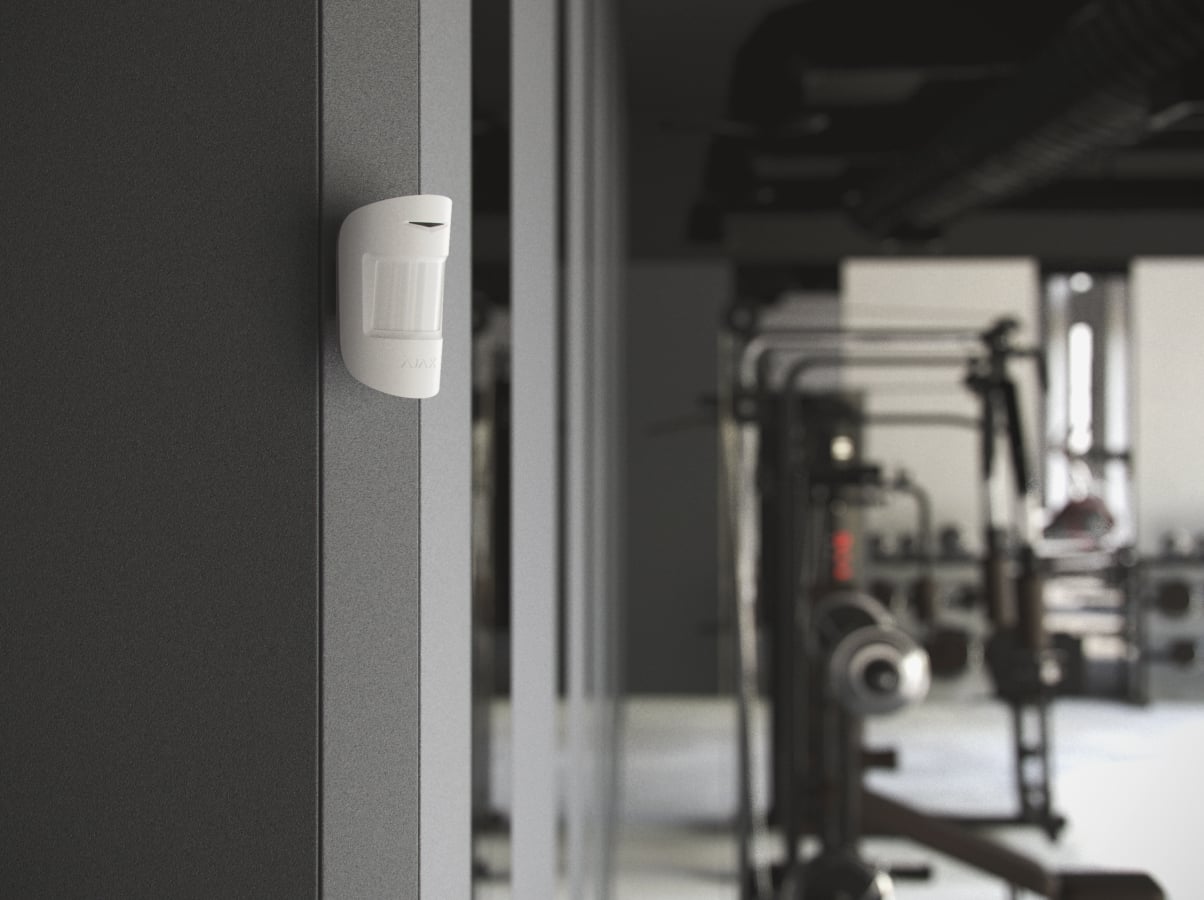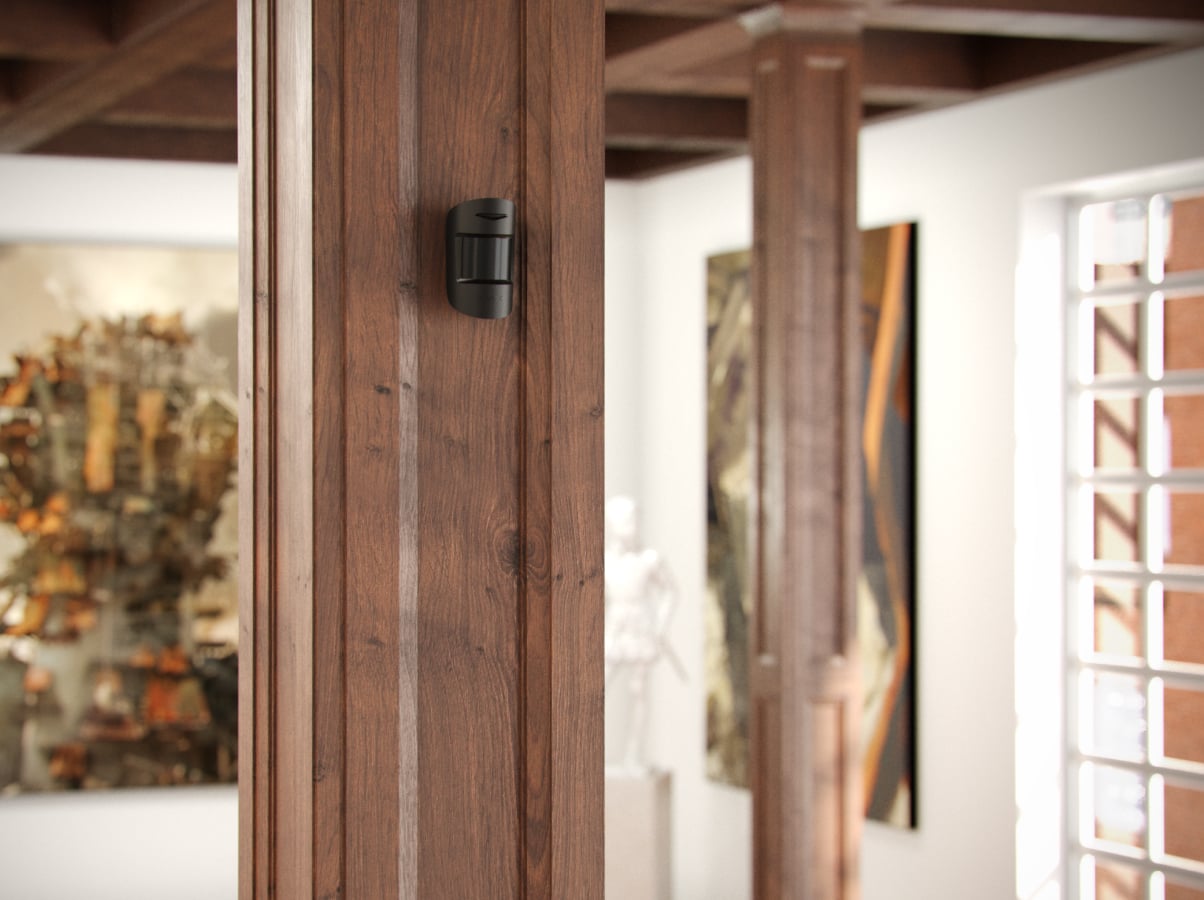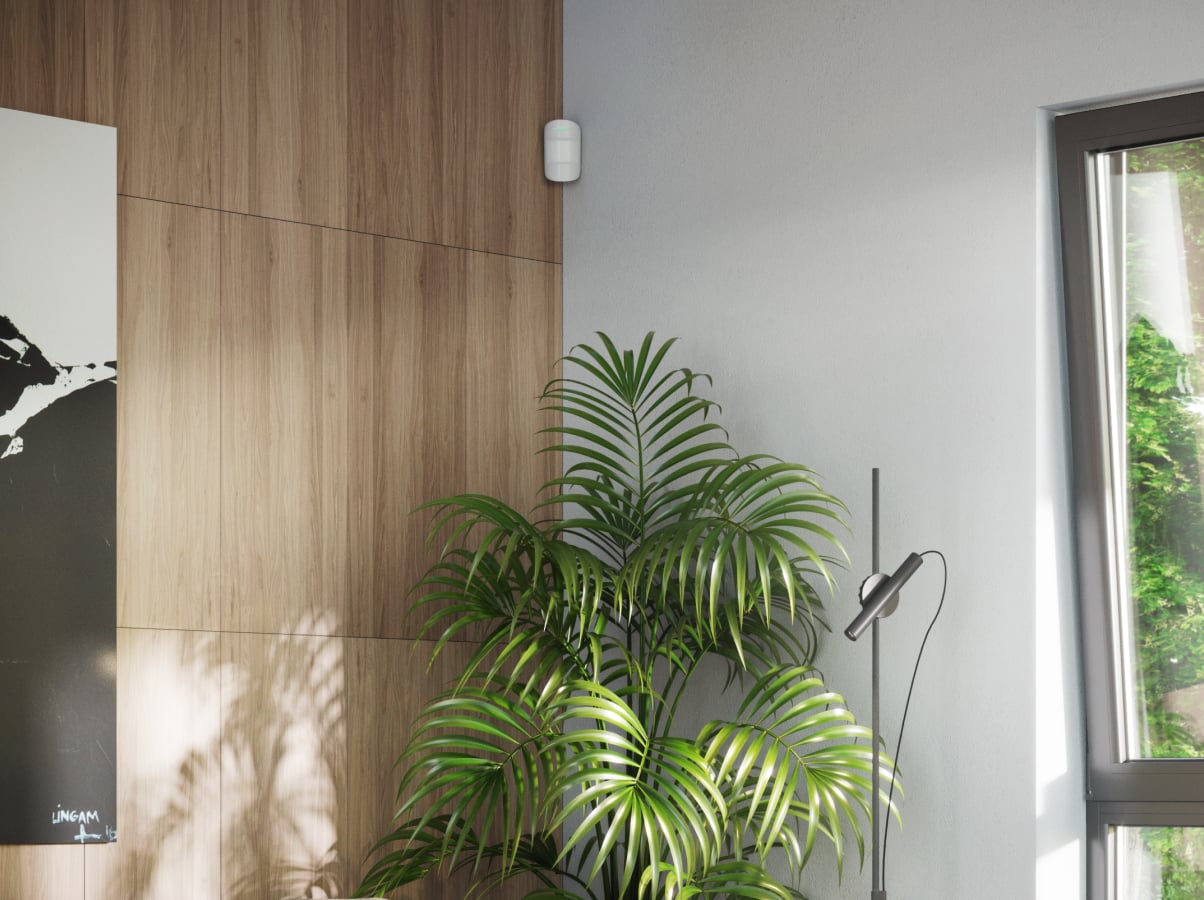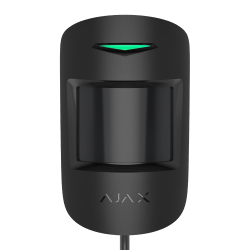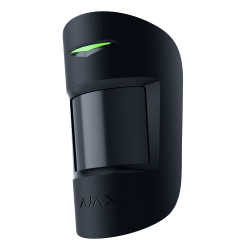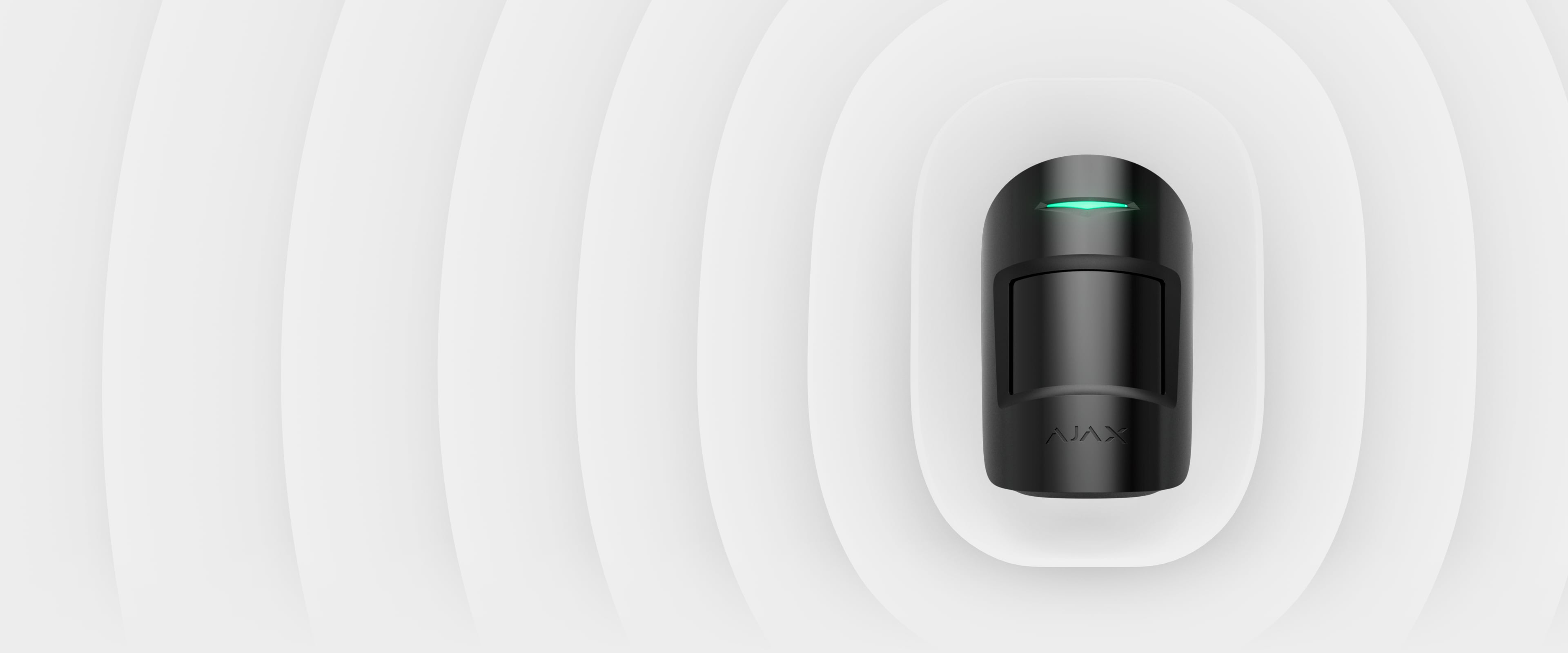
MotionProtect Jeweller
Draadloze IR-bewegingsmelder
Een belangrijk onderdeel voor intelligente beveiliging
Bewegingsdetectoren vormen de kern van een beveiligingssysteem. Omdat we hun cruciale rol erkennen, hebben we MotionProtect Jeweller gecreëerd: een misleidend eenvoudige maar krachtige bewegingsdetector voor optimale betrouwbaarheid en gebruiksgemak. De geavanceerde hardware- en softwarealgoritmen reduceren het aantal valse alarmen tot bijna nul. Met hun slanke ontwerp passen detectors naadloos in elke ruimte. De installatie wordt vereenvoudigd dankzij de draadloze mogelijkheden en het SmartBracket-montagepaneel, terwijl configuratie op afstand een bezoek ter plaatse overbodig maakt om kleine problemen op te lossen.
In een Ajax-systeem kunt u apparaten uit alle productcategorieën combineren: Inbraakbeveiliging (Superior en Baseline), Videobewaking, Fire en life safety of Comfort en automation. Creëer het systeem dat aan uw behoeften voldoet en beheer het in één enkele interface.
Overal waar er gevaar op inbraak is
Ontdek toekomstbestendige hardware
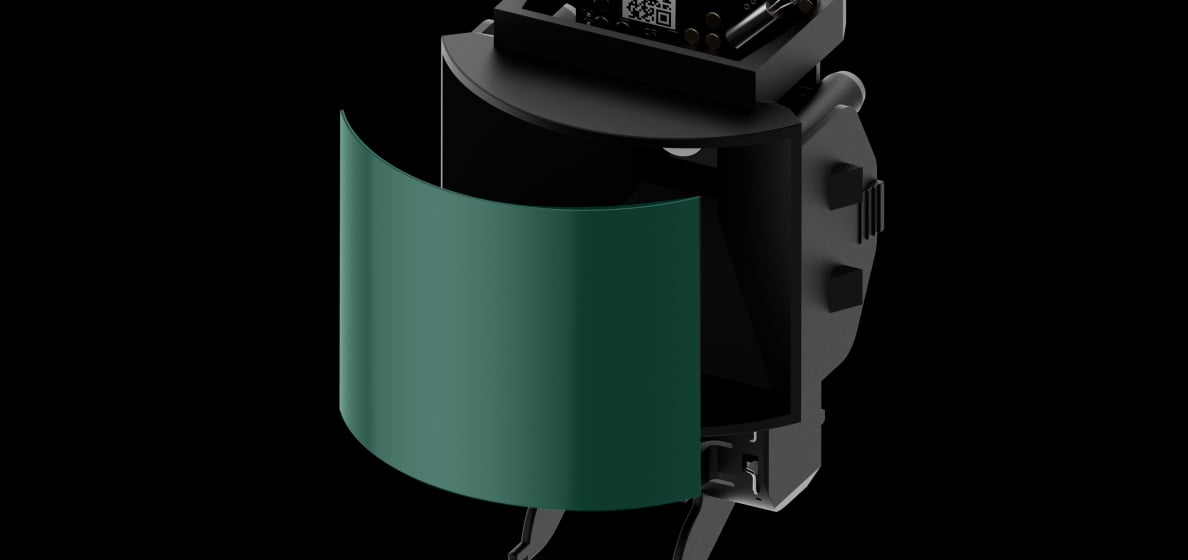
Fresnel-lens
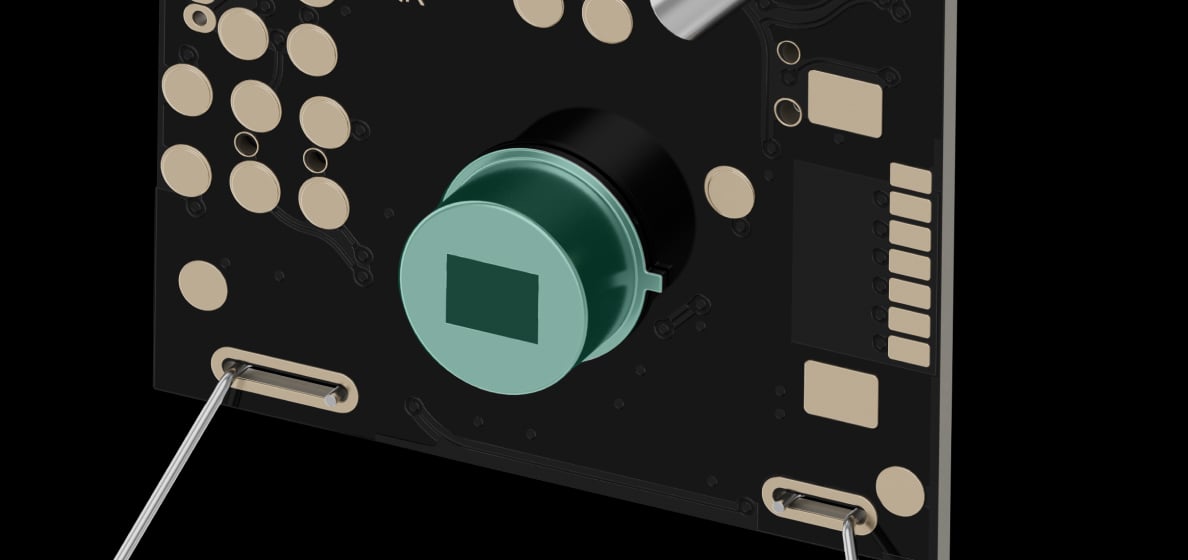
PIR-sensor
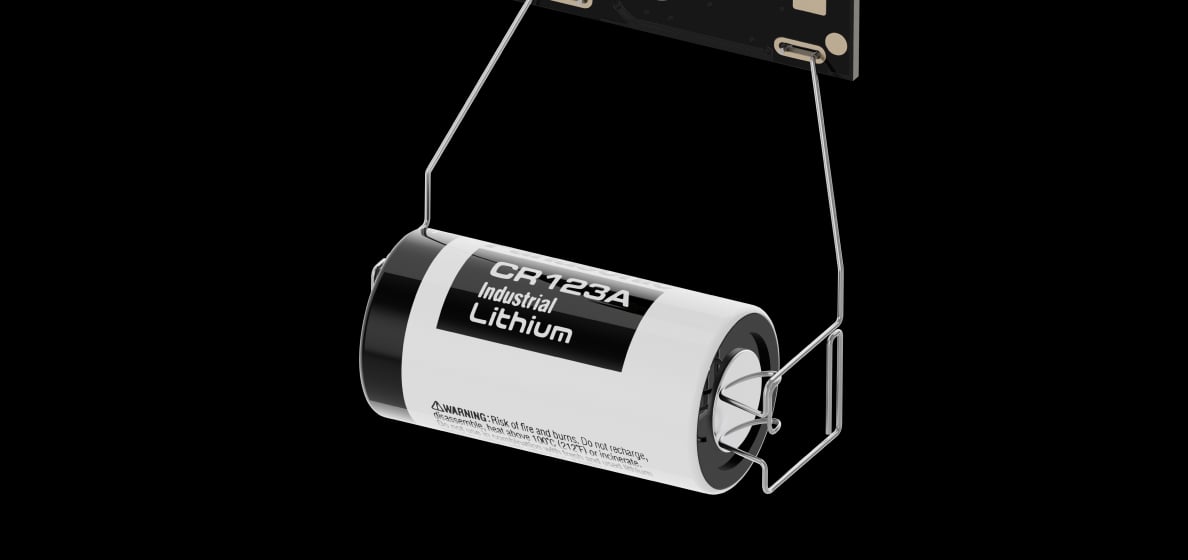
Voorgeïnstalleerde batterijen
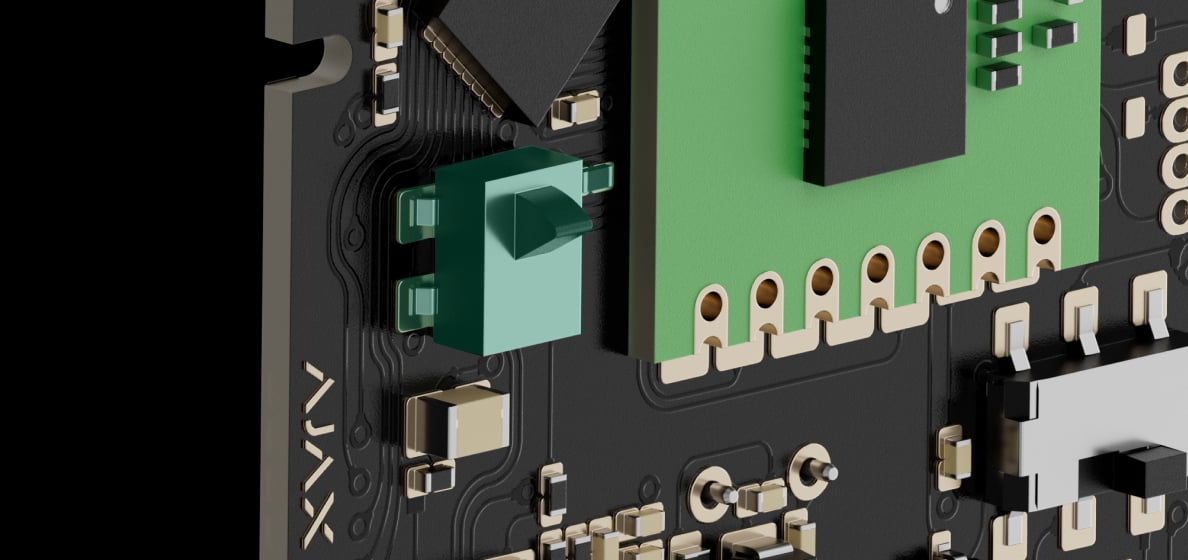
Sabotagebeveiliging
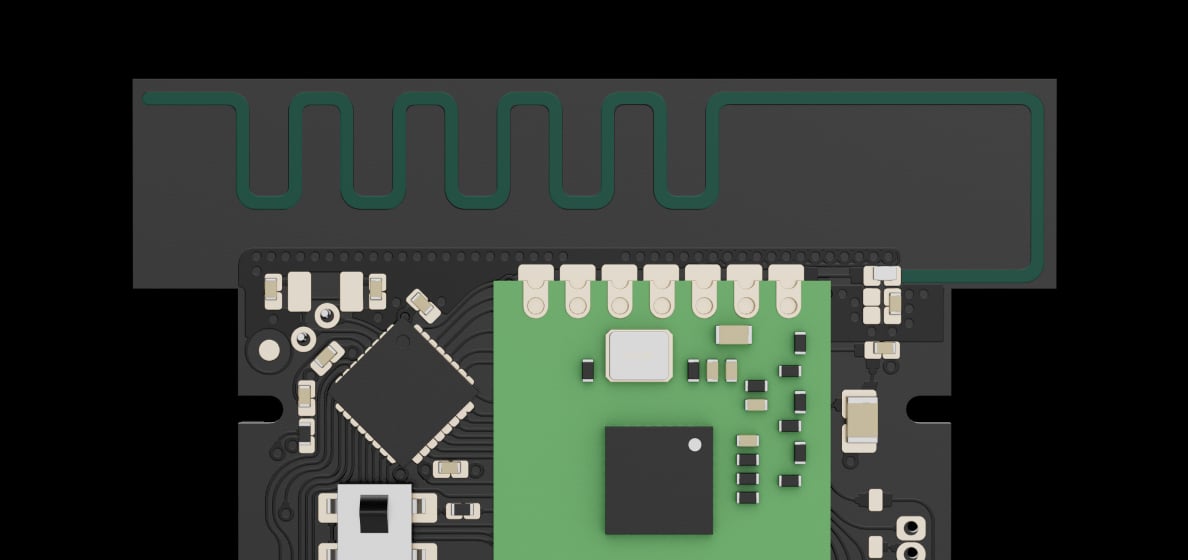
Jeweller-antennes
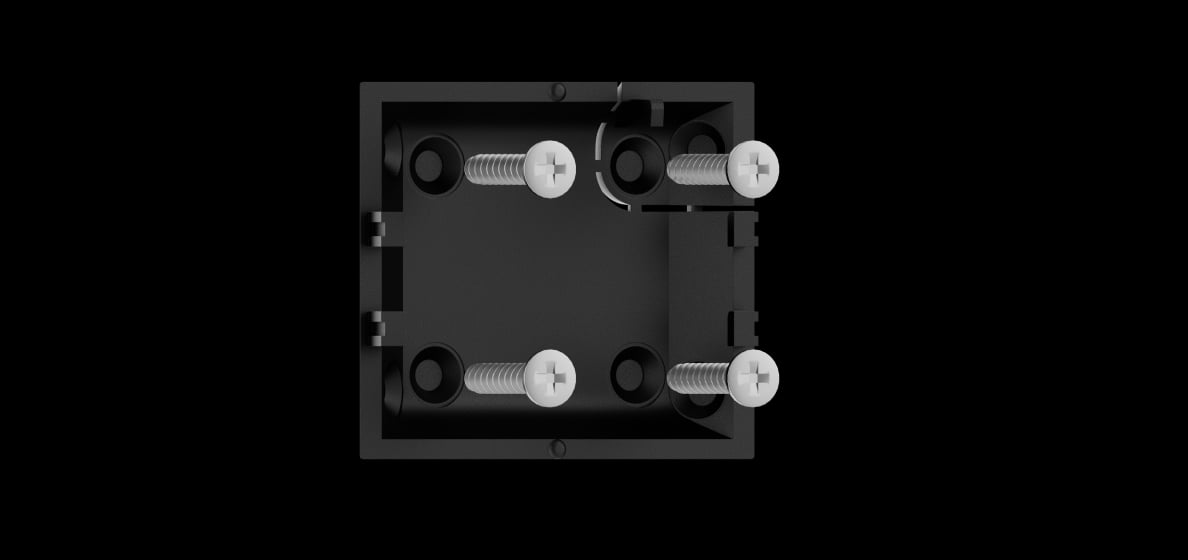
SmartBracket-montagepaneel
Geen inbreker blijft onopgemerkt
PIR-sensor
Alle Ajax-bewegingsdetectoren gebruiken PIR-sensoren van Excelitas Technologies: een toonaangevende Amerikaanse fabrikant gespecialiseerd in het ontwerpen en produceren van optronische componenten sinds 1931. Ajax Systems bewijst voortdurend de superieure kwaliteit van de sensor in de productiefase: we testen 100% van de geproduceerde apparaten. Samen met de Ajax-technologieën levert het de meest accurate inbraakdetectie.
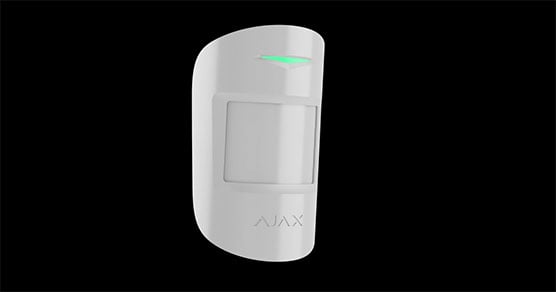
Speciale lens
Het patroon van de Fresnel-lens is zo ontworpen dat de diagrammen van de infraroodstraling van een mens, een dier en thermische ruis duidelijk van elkaar verschillen. Grote delen van de lens detecteren straling op hoofd- en romphoogte van een volwassene. Kleinere secties zorgen voor meer details in het diagram. De lens levert nauwkeurige informatie aan de detector over het thermische object in de detectiezone en de bewegingen daarvan.
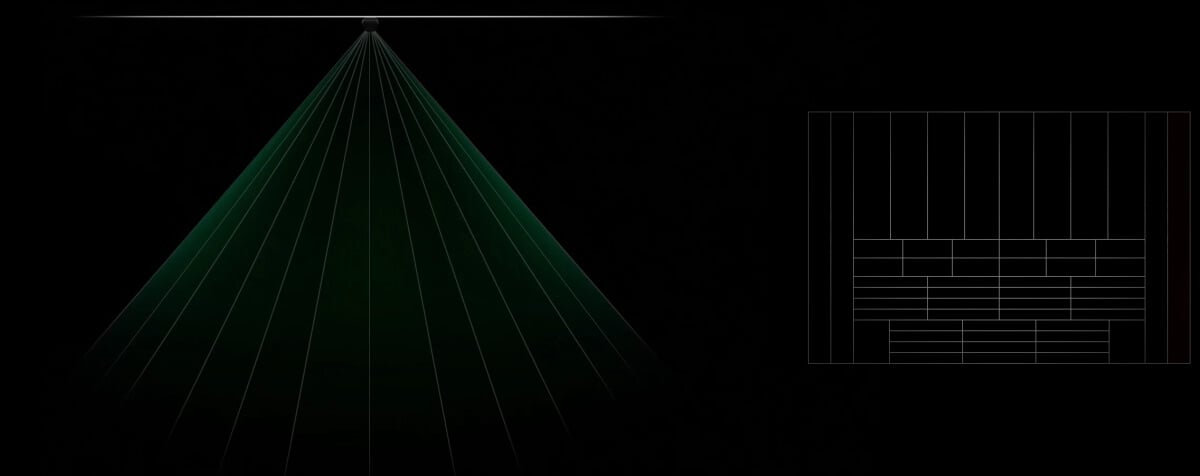
Filtert thermische verstoring

We hebben duizenden thermische patronen verwerkt die zijn veroorzaakt door mensen, dieren en de omgeving om zo het SmartDetect-softwarealgoritme te kunnen ontwikkelen. De detector analyseert in de ingeschakelde modus continu het thermisch diagram van de PIR-sensor, inclusief de intensiteit van de IR-straling, de grootte van de thermische plekken, de bewegingssnelheid, de tijd die in de detectiezone is doorgebracht en andere parameters. Tekenen van een vals alarm worden onmiddellijk en met hoge nauwkeurigheid door het softwarealgoritme gesignaleerd. De detector reageert daardoor correct op menselijke beweging zonder valse alarmen.
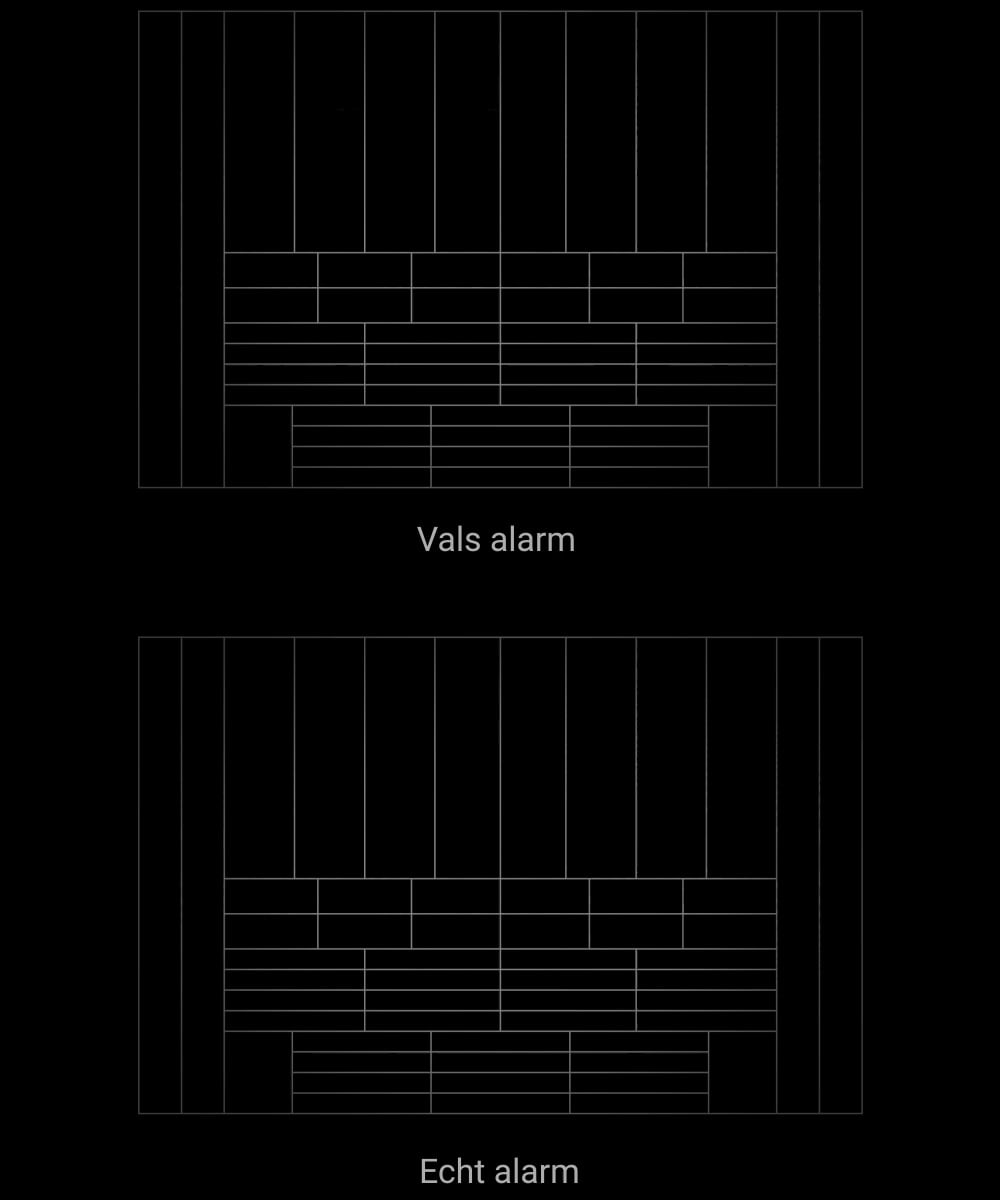

Vals alarm
Echt alarm
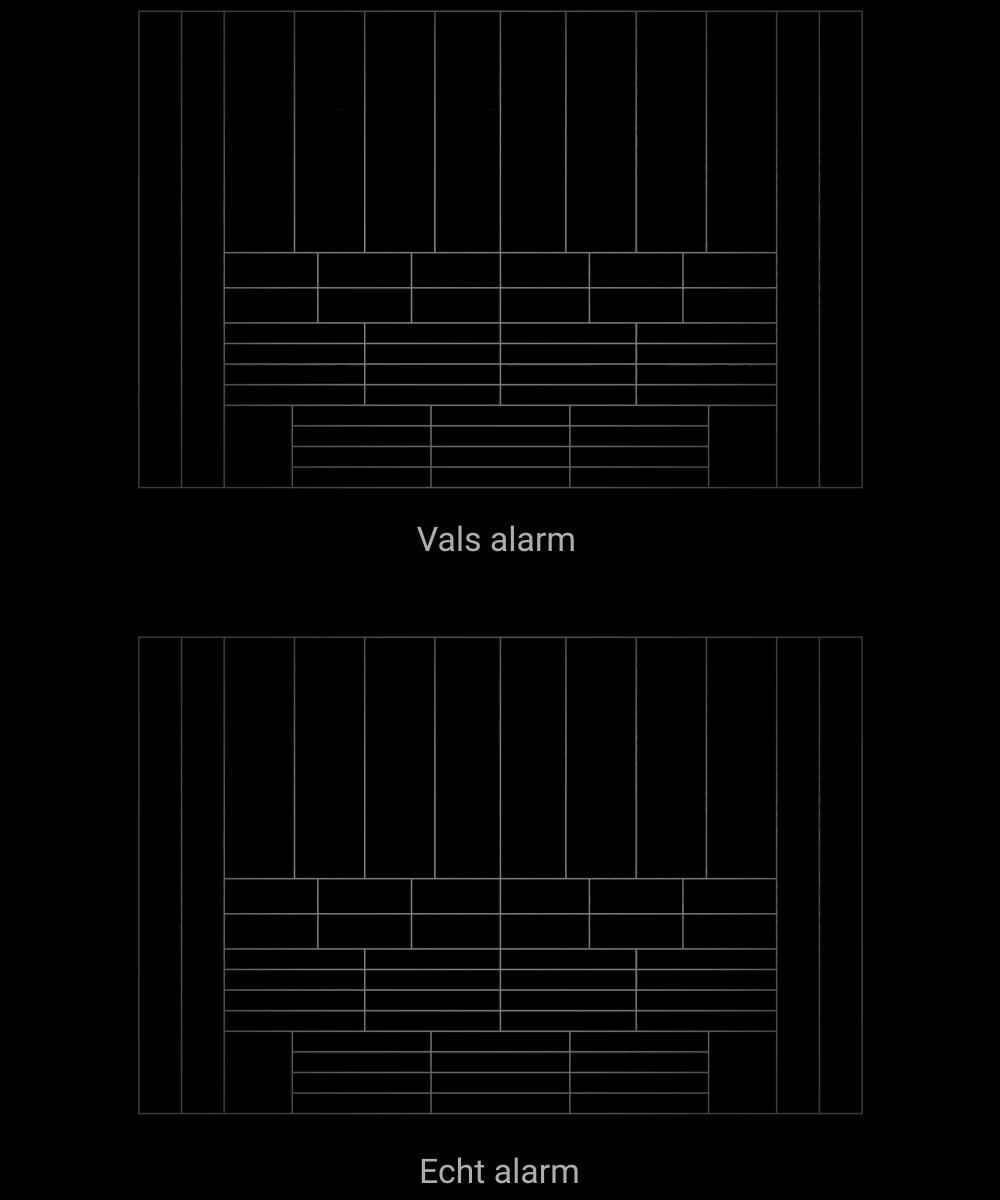

Vals alarm
Echt alarm
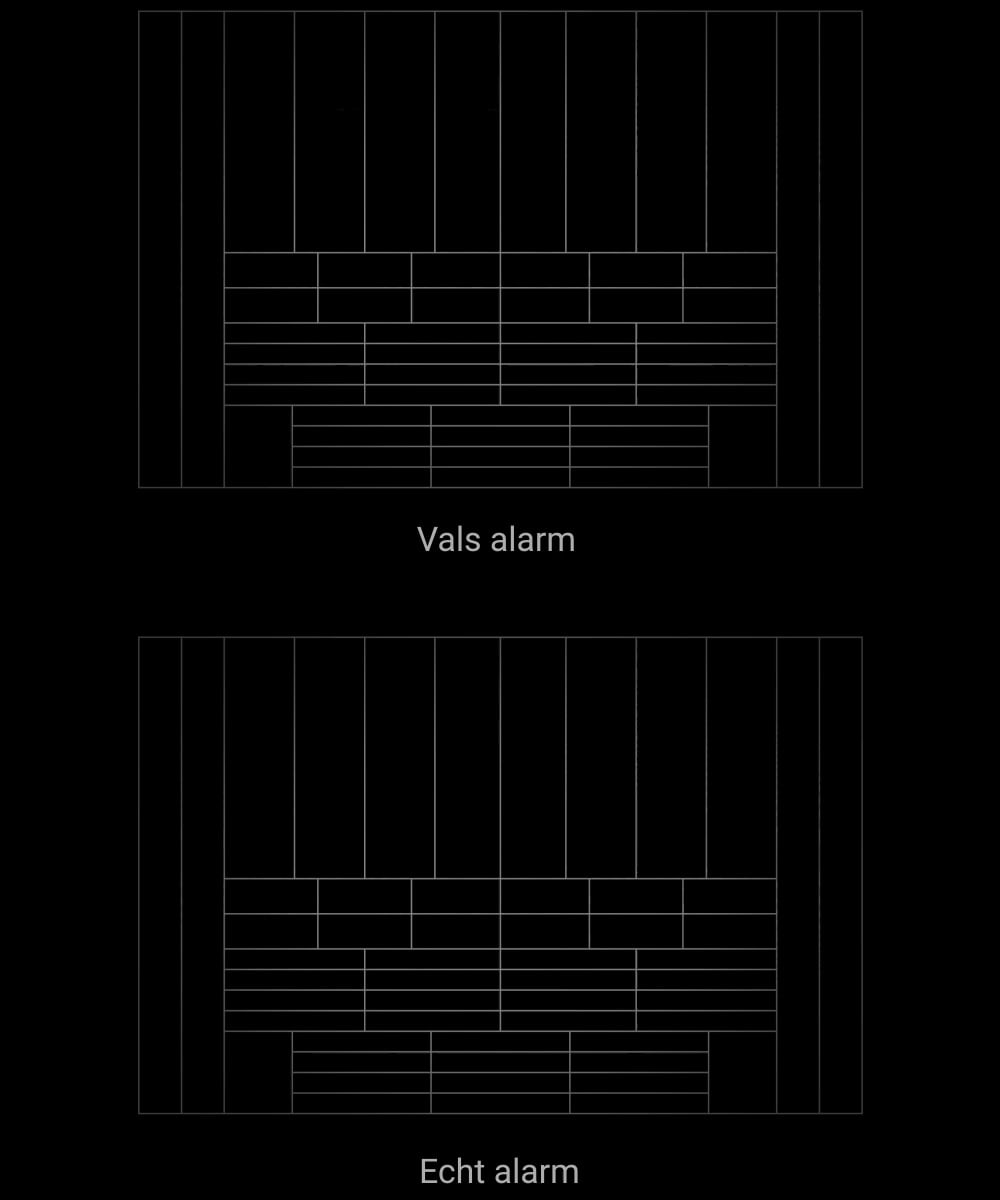

Vals alarm
Echt alarm
Temperatuurcompensatie
Temperatuurcompensatie is een softwareprogramma dat het contrast van het thermisch diagram in stand houdt, zelfs als de omgevingstemperatuur dicht bij de lichaamstemperatuur zit. Bij elke meting van de omgevingstemperatuur stelt de detector de gegevens van de PIR-sensor bij volgens de coëfficiënttabel die is opgeslagen in het geheugen. De detector werkt over het gehele opgegeven temperatuurbereik.
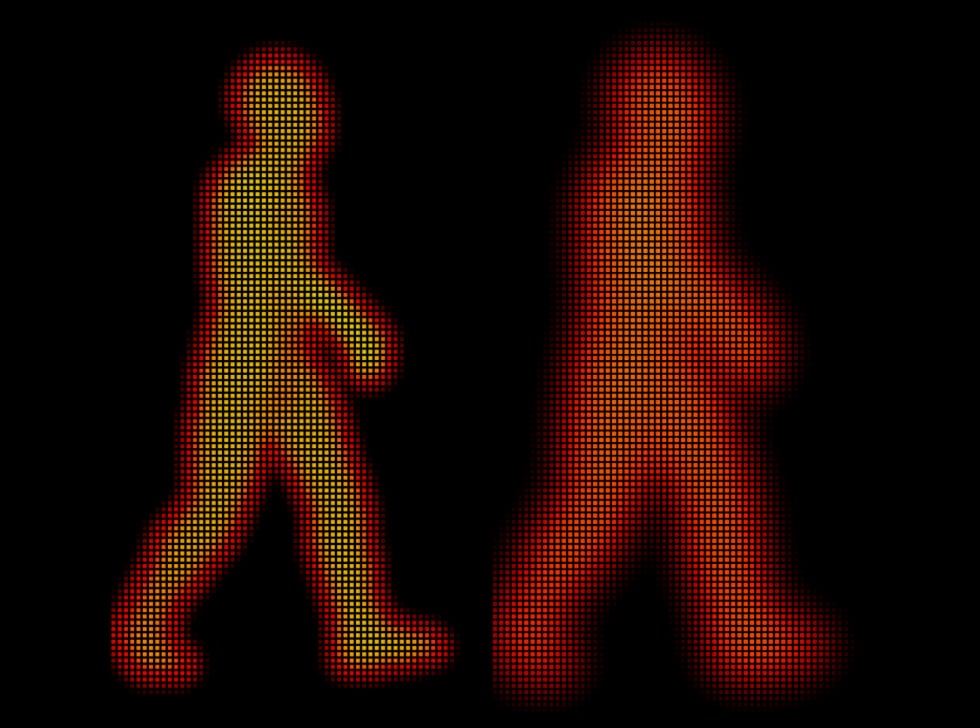
Gevoeligheidsniveau
De detector past zich aan de omstandigheden van een bepaald object aan. Hierbij houdt het rekening met mogelijke thermische storingen of huisdieren. Het aanpassen van de gevoeligheidsinstellingen heeft ook invloed op de markers waar valse alarmen op worden gefilterd. Bij een lage gevoeligheid reageert de detector minder snel op een actief huisdier. En bij een hoge gevoeligheid wordt het alarm bij elke beweging in de detectiezone geactiveerd.
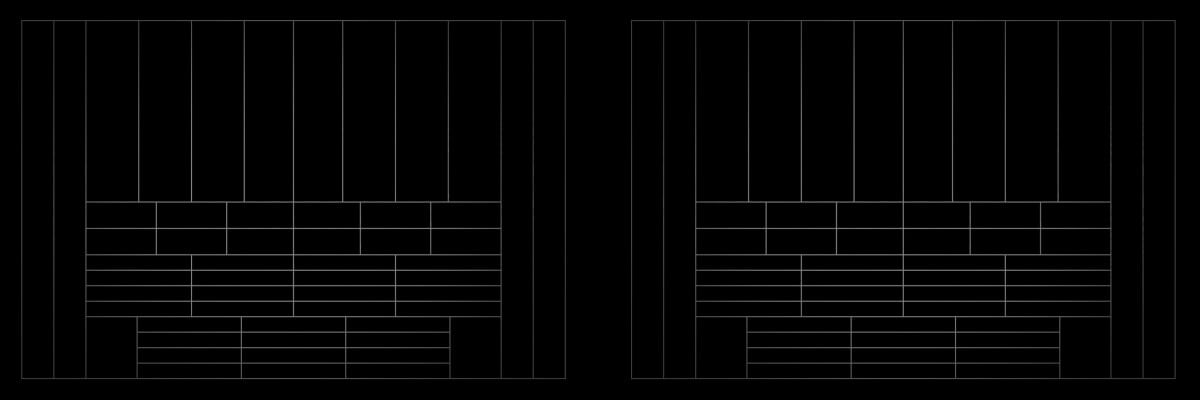
Professionele installatie
Met de juiste installatie op 2,4 m hoogte en de lens van de detector loodrecht op het beoogde pad van binnenkomst in de ruimte, levert de detector een accuraat thermisch diagram en huisdier-immuniteit. Het reageert direct op een echte dreiging waardoor valse alarmen door huisdieren tot 20 kg en tot 50 cm hoogte geminimaliseerd worden.
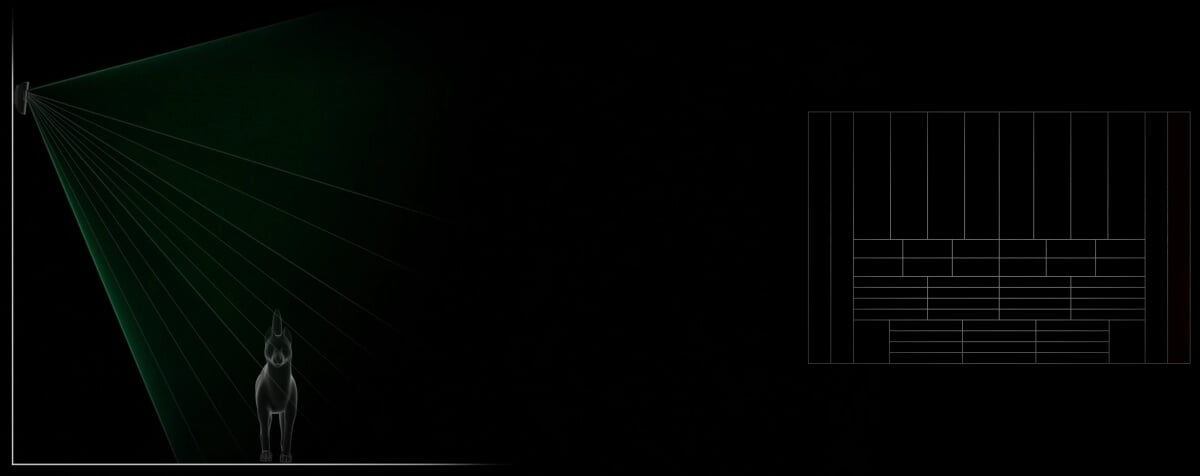
Draadloze flexibiliteit en betrouwbare prestatie
Baseline-apparaten werken zonder kabels en bieden maximale flexibiliteit tijdens de installatie. De voorgeïnstalleerde CR123A-batterijen van betrouwbare fabrikanten zorgen voor een probleemloze installatie, zodat er geen extra stappen nodig zijn om de apparaten te laten werken. Naast het realtime testen tijdens de productiefase van de batterijen inspecteert Ajax Systems elk product om de nauwkeurigheid van de eigenschappen van de batterij te garanderen. De batterijen zijn eenvoudig te vervangen, zodat u ze na ongeveer vijf jaar zelfstandig gebruik kunt vervangen. De batterijstatus is altijd toegankelijk via de Ajax-app. Gebruikers en beveiligingsbedrijven ontvangen maanden van tevoren waarschuwingen als de batterij bijna leeg is, zodat ze deze op tijd kunnen vervangen.
Realtime testen tijdens batterijproductie
Tot maximaal 5 jaar onafhankelijk werkzaam
Waarschuwing vooraf bij laag batterijniveau
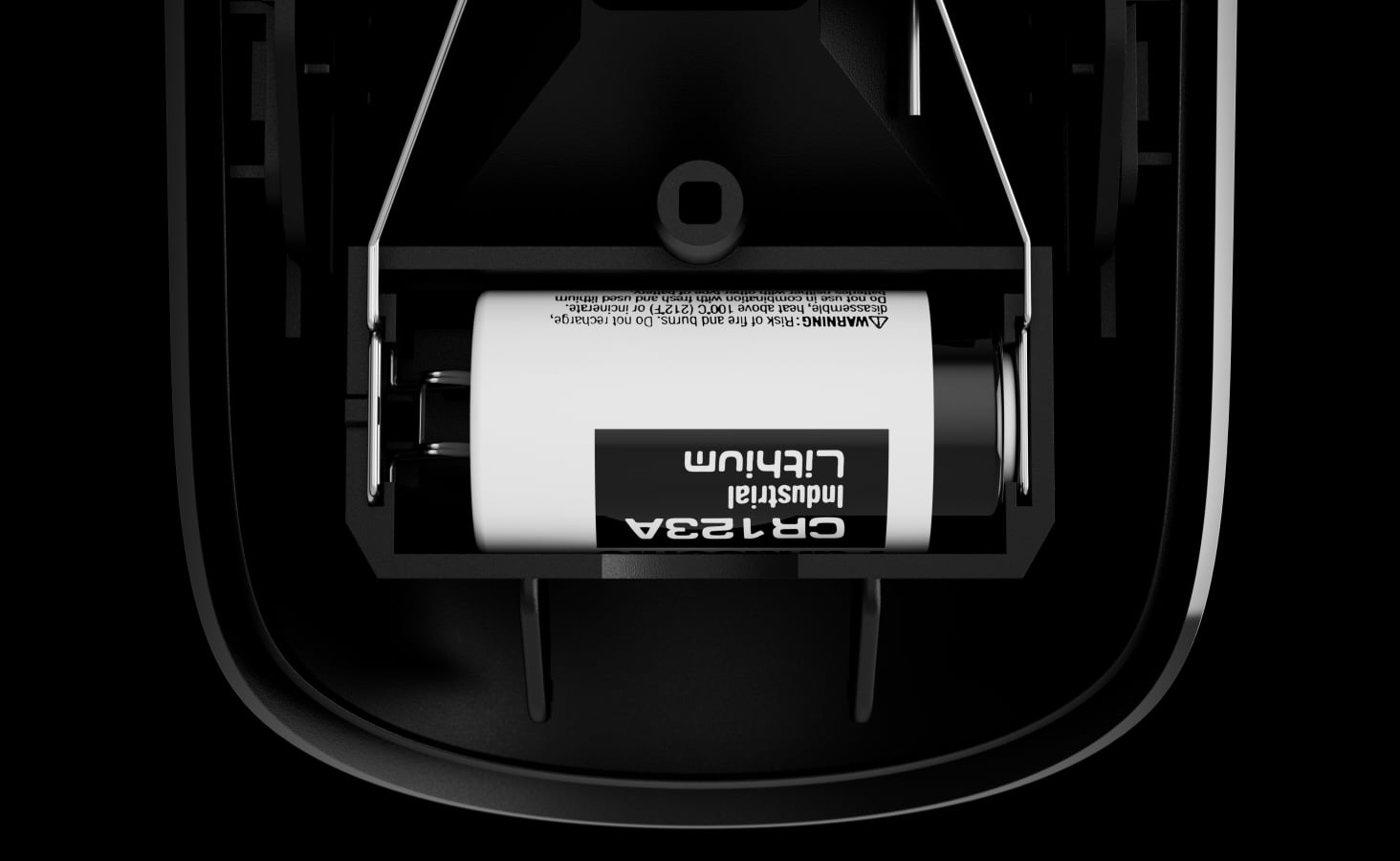

Jeweller
Unieke draadloze technologie
Het Ajax-systeem gebruikt een radioprotocol voor beveiligde tweerichtingscommunicatie gebaseerd op het bedrijfseigen protocol Jeweller. Het ondersteunt blokcijferversleuteling en apparaatverificatie bij elke sessie met de hub om sabotage, spoofing of gegevensdiefstal te voorkomen.
Tot 1.700 m aan radiocommunicatie met een hub of signaalversterker1
Versleutelde tweerichtingscommunicatie
Meldingen over jamming en verbindingsverlies
Geschaald en uitgebreid
ReX 2 Jeweller vergroot het radiocommunicatiebereik van alle Ajax-apparaten via Jeweller. Het garandeert een stabiele communicatie via ethernet, zelfs door staal en beton heen, waarbij de kabel als extra communicatiekanaal wordt gebruikt. Er kunnen maximaal vijf signaalversterkers binnen één Ajax-systeem werken om het netwerk tweemaal zo groot te maken, zodat het plaatsen zoals ondergrondse parkeergarages, kelders, en metalen hangars kan bestrijken.
Maximaal 5 signaalversterkers binnen één systeem
Ethernet als een alternatief communicatiekanaal
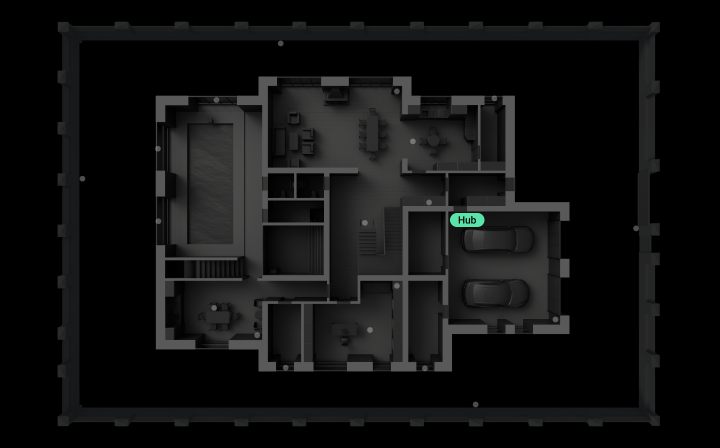

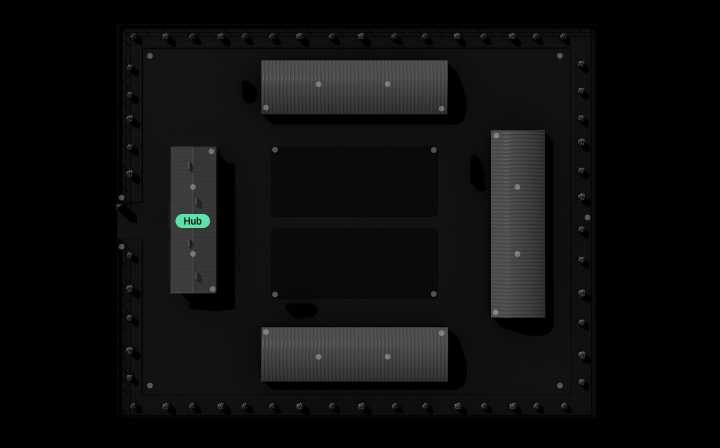
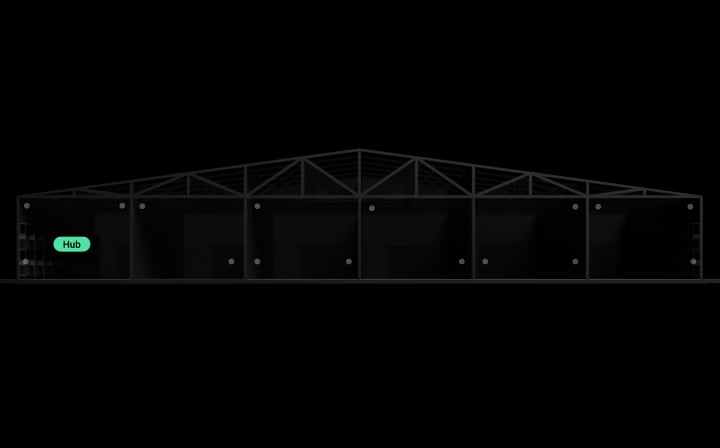
Systeemtoezicht
Alle Ajax-apparaten voeren een automatische zelfdiagnose uit en geven hun status door aan de hub. Er wordt voortdurend toezicht gehouden op essentiële parameters, zoals de sabotagebeveiliging, communicatie, voeding, en de status van sensoren. De Ajax Cloud-server regelt de communicatie tussen de hub en Ajax-apps, zodat ARC's, beveiligingsbedrijven en gebruikers direct meldingen ontvangen. In geval van storingen of communicatiestoringen wordt onmiddellijk een technicus ingelicht om de nodige diensten te verlenen.
Automatische zelfdiagnose van het apparaat met statusrapport
Regelmatige polling om de huidige status van het apparaat weer te geven in de apps
Directe onderhoudsmeldingen

Bestand tegen sabotage
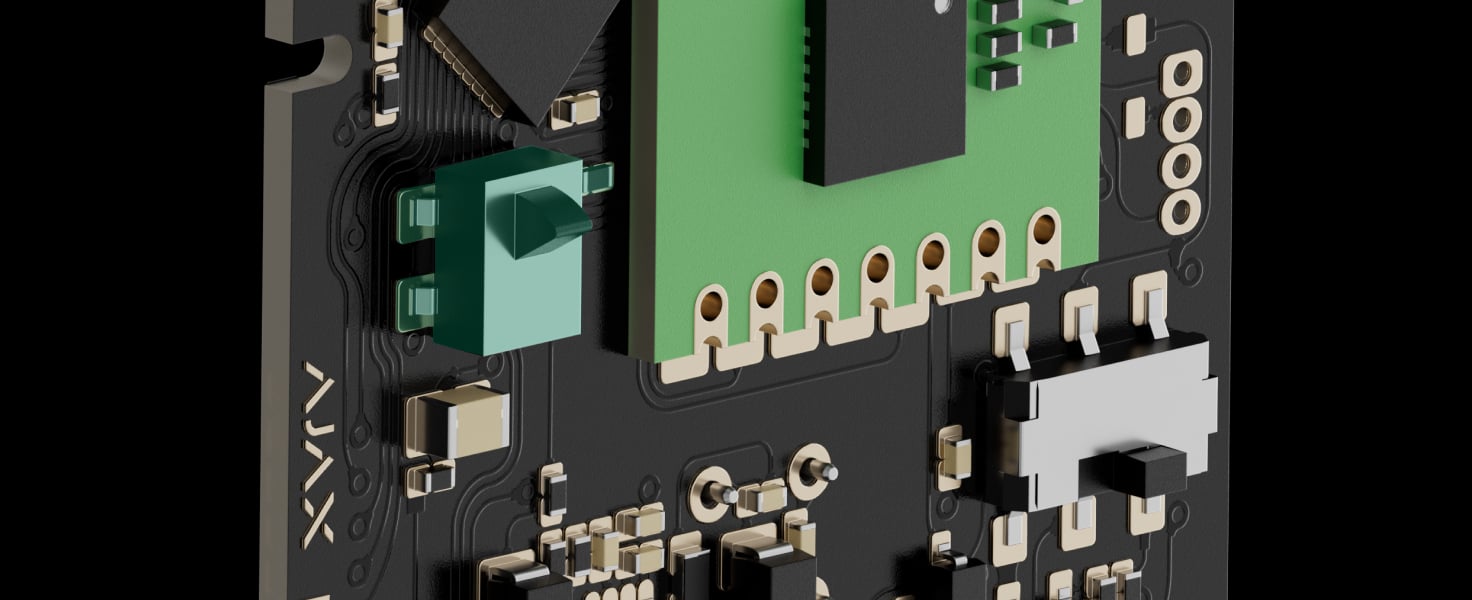


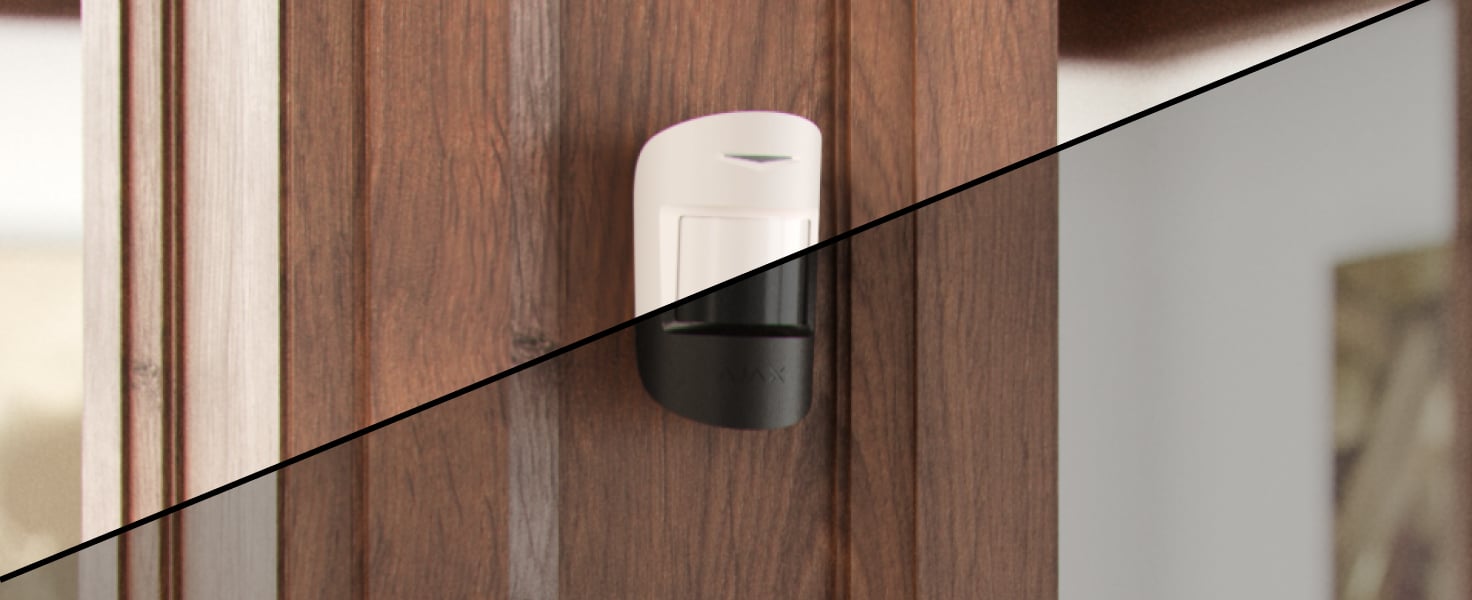
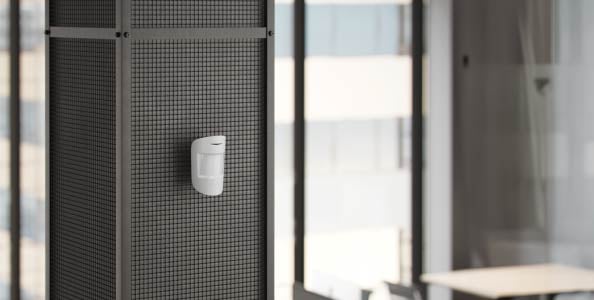

Moeiteloze installatie en instelling
MotionProtect Jeweller is direct klaar voor gebruik. Met behulp van het SmartBracket-montagepaneel kan een installateur het apparaat moeiteloos aan de muur bevestigen, waardoor de behuizing niet gedemonteerd hoeft te worden. De Ajax-apps zorgen voor een snelle integratie met het ecosysteem: koppel het apparaat simpelweg met de hub door de QR-code te scannen. Het kan altijd op afstand opnieuw worden geconfigureerd zonder dat bezoeken ter plaatse nodig zijn.
Koppeling met een hub via een QR-code

SmartBracket-montagepaneel: De behuizing hoeft tijdens de installatie niet te worden gedemonteerd
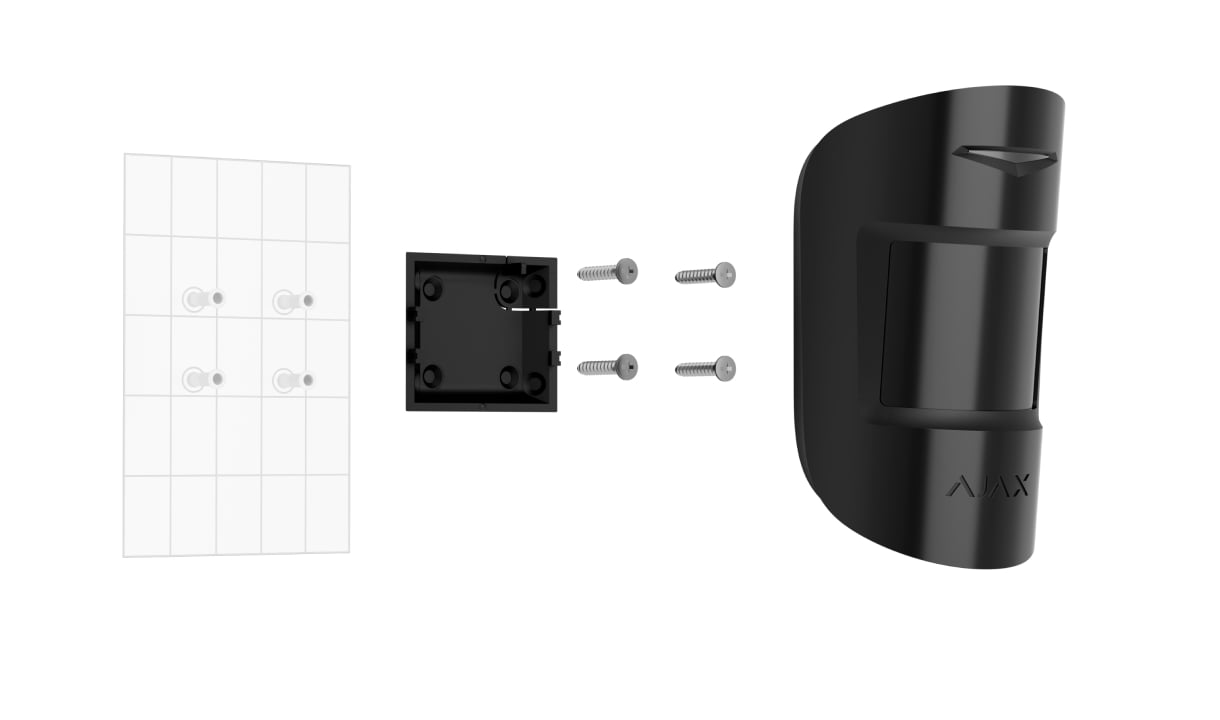
Configuratie en testen in de mobiele en desktop-apps

PRO Desktop app voor macOS en Windows
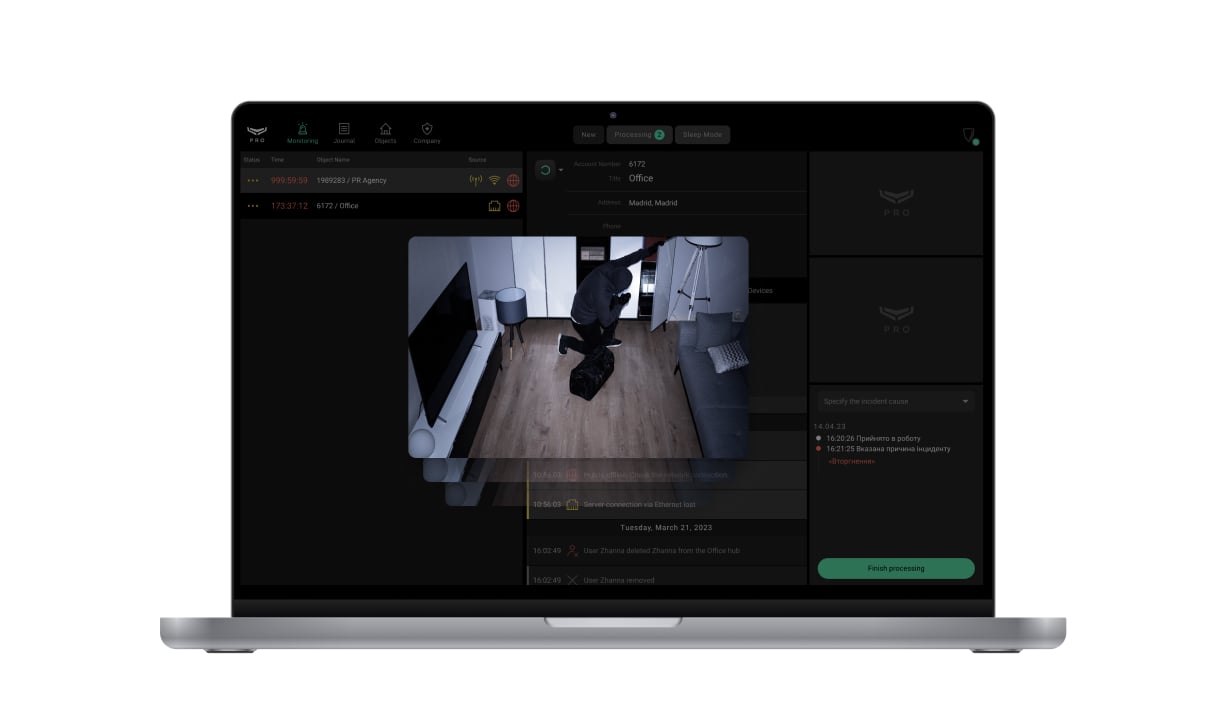
- 1 In een open ruimte.
Technische informatie
Meer MotionProtect-versies
Ajax-productcategorieën
In een Ajax-systeem kunt u apparaten uit alle productcategorieën combineren: Inbraakbeveiliging (Superior en Baseline), Videobewaking, Fire en life safety of Comfort en automation. Creëer het systeem dat aan uw behoeften voldoet en beheer het in één enkele interface.
